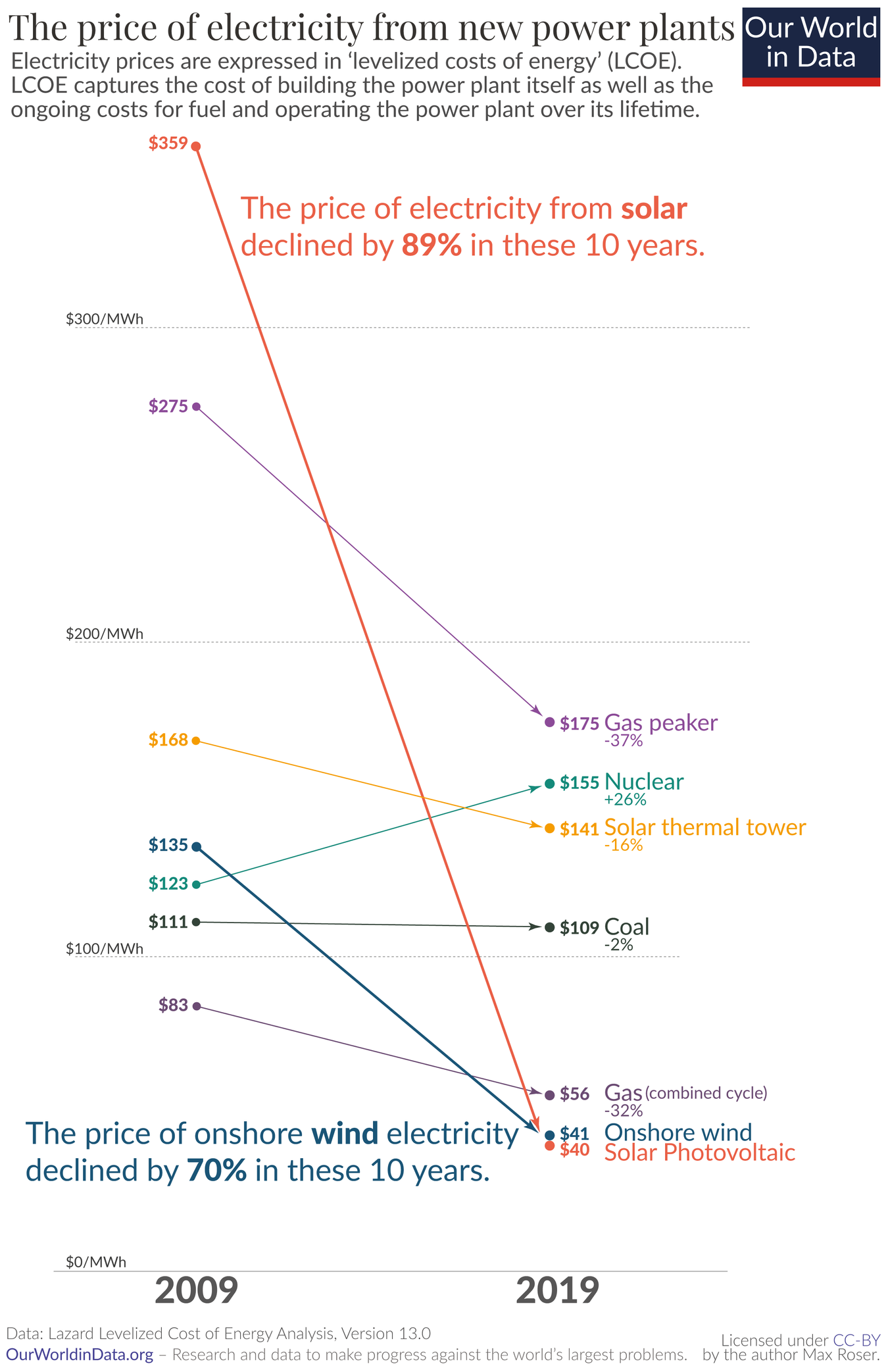Technology
This is the official technology community of Lemmy.ml for all news related to creation and use of technology, and to facilitate civil, meaningful discussion around it.
Ask in DM before posting product reviews or ads. All such posts otherwise are subject to removal.
Rules:
1: All Lemmy rules apply
2: Do not post low effort posts
3: NEVER post naziped*gore stuff
4: Always post article URLs or their archived version URLs as sources, NOT screenshots. Help the blind users.
5: personal rants of Big Tech CEOs like Elon Musk are unwelcome (does not include posts about their companies affecting wide range of people)
6: no advertisement posts unless verified as legitimate and non-exploitative/non-consumerist
7: crypto related posts, unless essential, are disallowed
view the rest of the comments

It's frustrating seeing a graph showing the price of electricity going down while my utility prices go up. Does this take into account infrastructure cost?
Yeah energy prices have gone through the roof but apparently it's cheaper in every way except nuclear - and we don't even have nuclear around here
The data stops in 2019. It's completely outdated. The world is in chaos since covid. But anti nuke propagandists don't care much about these "details".
Hi, I'm a human being, not an "anti nuke propagandist". I just checked, if there's newer data, and well, there is, but no one seems to have formatted that in a way yet, which you or me would be willing to digest.
Personally, my impression has been that the solar industry was one of the industries that was pretty much completely unaffected by COVID, so I felt this graph was still perfectly relevant.
But even if it were strongly affected, I do not see why our technological progress in manufacturing, that we had in 2019, should evaporate with COVID.
There is inflation and a rise in natural catastrophes, but I feel like those would affect nuclear and others roughly proportional.
Well, if you omit batteries then you are mostly true, although with covid there was a huge shortage of electronic components that would affect solar a lot, at least depending on where you live. Batteries is a big unknown now, because with all the demand for it, we simply can't build enough batteries to feed all the grids with it.
Alright, yeah, good point with the batteries. I'm hoping the batteries in electric cars will double up as storage for the grid (already happening today), but also that there's just enough redundancy with other renewables.
https://www.powerengineeringint.com/renewables/lcoe-for-offshore-wind-now-on-par-with-coal-bnef/amp/
Covid actually had almost no impact on the prices and they continued to level off a little lower. The surprising one is the onshore wind remaining on par with solar and continues to drop (albeit slowely).
Gas skyrocketed in Europe. Oil is going yo-yo. How does this have no impact on the price?
The graph is talking about LCOE. I am talking about LCOE. The other comments are talking about LCOE. You are talking about spot price on input goods. One of us here is talking about something different.
https://www.sciencedirect.com/topics/engineering/levelized-cost-of-electricity#:~:text=Levelized%20Cost%20of%20Electricity%20(LCOE)%20is%20an%20economic%20measure%20used,electricity%20across%20various%20generation%20technologies.
Levelized Cost of Electricity
Levelized Cost of Electricity (LCOE) is an economic measure used to compare the lifetime costs of generating electricity across various generation technologies. The lifetime costs for generation can be categorized into the following groups: • Capital Costs: up-front costs to construct a power plant • Operation and Maintenance (O&M) Costs: costs incurred to run a power plant. These costs can be sub-categorized into fixed and variable costs. Fixed O&M costs are incurred regardless of the plant generating electricity; they are comprised of personnel salaries, security costs, insurance, etc. Variable O&M costs are directly linked to the generation of the power project. Fuel costs for conventional plants also vary with output. • Disposition Costs: costs typically incurred at the end of the useful life. The disposition costs for certain generation technologies, such as nuclear power plants, can be huge. In most of the instances, the disposition costs for the solar and generation projects are assumed to be zero because the scrap value of the equipment generally should cover the cost of removal.
As shown in the examples below, financing costs are internalized in the LCOE calculation. The LCOE methodology also considers various tax benefits, including depreciation that may provide a tax shield. LCOE is a useful tool as it allows comparison of various generation technologies with different capital costs, O&M costs, useful life, etc. LCOE can be viewed from an economic perspective as an “average” electricity price that must be earned by a specific generation source to break even. LCOEs are used as a relative scale to compare various technologies rather than an absolute measure informing investment decisions. Actual system planning must also consider reliability issues (such as availability at periods of peak demand) as well as other factors. Accordingly, LCOE is primarily used by policymakers for long-term planning, as well as devising incentive mechanisms. Developers and independent power producers may use the metric as a broad planning tool to compare the attractiveness of various generation technologies. Finally, investors are interested in LCOEs to understand long-term economic trends, especially for renewables, for which the decrease in cost has greatly improved their competitiveness.
That’s your big takeaway here? Anti nuke? It’s just one line on the graph, you’re being hysterical.